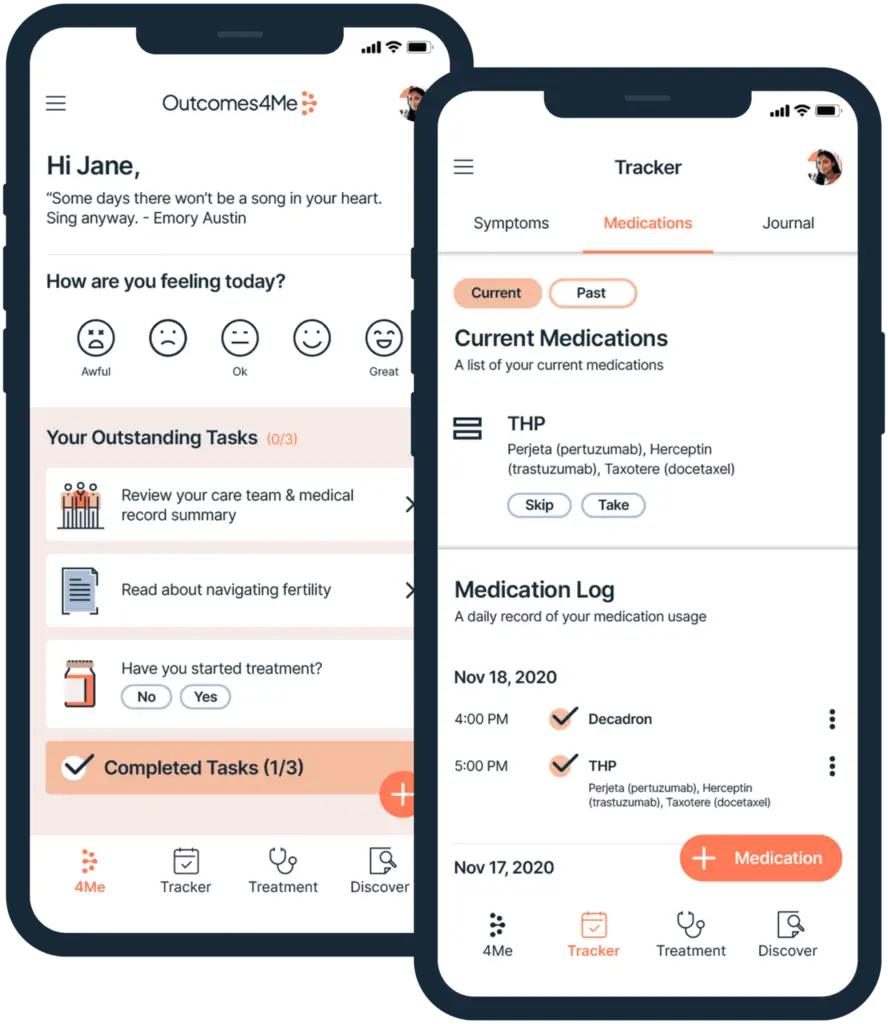Breast cancer has four main stages ranging from stage 0 to stage 4. The bigger the tumor and the spread to other parts of the body help determine the stage of breast cancer. To simplify, the stage is based on the tumor size (T), lymph node spread (N), and organ spread (M). Doctors use the following criteria to determine the stage of breast cancer:
- is the cancer invasive or not
- if the cancer has spread to nearby organs or tissue
- the size of the tumor
- if the cancer has impacted the lymph nodes
Breast Cancer – Stage 0 Explained
Stage zero (0) also known as noninvasive cancer means it is only in the ducts of the breast tissue and has not spread to the surrounding tissue of the breast. This includes ductal carcinoma in-situ (DCIS) and lobular carcinoma in-situ (LCIS).
Breast Cancer – Stage 1 Explained
Stage 1A: The primary tumor is small (about 2 cm wide or less), invasive, and the cancer has not spread to the lymph nodes.
Stage 1B: Cancer has spread to the lymph nodes and either there is no tumor in the breast, or the tumor is larger than 0.2 mm but less than 2 mm in size.
Breast Cancer – Stage 2 Explained
Stage 2A: The tumor is smaller than 2 cm and has spread to 1–3 nearby lymph nodes, or it’s between 2 and 5 cm and hasn’t spread to any lymph nodes.
Stage 2B: The tumor is between 2 and 5 cm and has spread to 1–3 axillary (armpit) lymph nodes, or it’s larger than 5 cm and hasn’t spread to any lymph nodes.
Breast Cancer – Stage 3 Explained
Stage 3A: The cancer of any size has spread to 4 to 9 axillary lymph nodes or to internal mammary lymph nodes. At this stage tumors are greater than 5 cm and the cancer has spread to 1–3 axillary lymph nodes.
Stage 3B: A tumor has invaded the chest wall or skin. It may or may not have spread to up to 9 axillary or internal mammary lymph nodes. It has not spread to other parts of the body
Stage 3C: A tumor of any size that has spread to 10 or more axillary lymph nodes, the internal mammary lymph nodes, and/or the lymph nodes under the collarbone.
Breast Cancer – Stage 4 Explained
At stage IV the tumor can be any size and has spread to other organs, such as the bones or distant lymph nodes, etc. Stage IV also includes inflammatory breast cancer, regardless of tumor size or nodal/organ involvement.
NEXT STEPS
Talk to your doctor to determine the right tests to get done to determine the stage you may be in as this will impact your outcome and treatment. Find the right treatment path for your breast cancer today.




